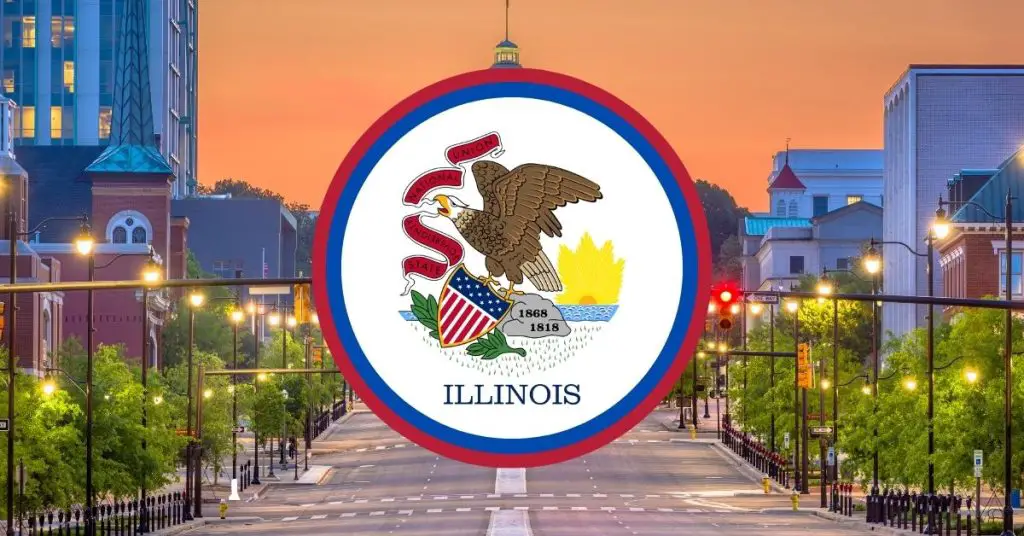Find low income housing with no wait or apartments that will be available in an emergency near you. There are charities, government programs from HUD, temporary places to stay, and other affordable resources.
Find where, and how to get low-income housing, including apartments for rent, with no waiting list near you below.
The demand for affordable housing is always very high. Find how to qualify and to be eligible. Priority for no-wait list apartments and homes is for veterans, women fleeing domestic violence, single moms, or seniors among others. They will be be given priority based on their income.
The number of low income apartment rentals near you will be limited. This means that some applicants may be placed into emergency low income housing, including apartments, condos, town-homes or short term residences Families with children, seniors or the disabled and single mothers will be given priority when it comes to bypassing a waiting list.
Understanding the Concept of Public Housing
The concept of Public housing was established to provide decent and safe rental housing for eligible low-income families, the elderly, and persons with disabilities.
Approximately 1 million households living in public housing units are managed by some Public Housing Authorities(PHA).
The U.S. Department of Housing and Urban Development (HUD) provides financial help to local housing agencies that manage the housing for low-income residents at rents they can afford.
Eligibility criteria for public housing
The Housing Authority bears the duty of ensuring that every individual and family accepted into the program meet the essential eligibility criteria. To qualify for the program, applicant families must meet the following criteria, as determined by the housing development authority:
- Checking your total income for the year
- Being classified as an elderly person, a family, or someone with a disability
- Having U.S. citizenship or the right immigration status
Once determined eligible, the Housing Authority will conduct reference checks to ascertain the suitability of you and your family as tenants. Only applicants with a positive tenant history will be granted admission, as this helps maintain a peaceful and pleasant living experience for all residents.
Application process for public housing authority
Visit your local Public Housing Agency (PHA) to complete the Public Housing Application. The agency staff will help you in case of any assistance or query with the process of application. You will need the following information to determine eligibility:
- Your current address and phone number
- Information about your current and past landlords, which will help assess your family’s suitability as a tenant
- An estimated family income for the upcoming twelve months
- Details regarding the source of your income
- Information about your current and past employers to verify your income and deductions
- Copies of your bank account statements
- The names and relationships of everyone who will be living in the housing unit
- Information about any family characteristics, such as veteran status
- Details about any family circumstances, like living in substandard housing, which may qualify you for tenant selection
- Social security numbers of household members, as required
The PHA may also conduct a home visit to interview you and your family members to observe how you manage the upkeep of your current home.
Income Limit to Qualify for Public Housing Authority
To qualify for Public Housing Authority assistance, your household must meet specific net and gross income limits determined by the size of your household. These income limits can vary depending on the state you reside in.
| Persons in Family/Household | Gross Monthly Income | Net Monthly Income |
| 1 | $1,383 | $1,064 |
| 2 | $1,868 | $1,437 |
| 3 | $2,353 | $1,810 |
| 4 | $2,839 | $2,184 |
| 5 | $3,324 | $2,557 |
| 6 | $3,809 | $2,930 |
| 7 | $4,295 | $3,304 |
| 8 | $4,780 | $3,677 |
Process to Finding Low Income Public Housing
- Begin your search for Section 8 apartments or houses that suit your housing needs
- Apply to your preferred communities by accessing the housing authority application portal
- Once your application nears the top of the waiting list (or if the property has no waitlist), the property staff will send you a letter, requesting all adult household members to attend a preliminary interview
- The property will conduct a rental and background check
- Verify the accuracy of the information you provided regarding your income and assets
- For properties that offer “Self-Sufficiency” programs, you may be required to complete additional screening, which could include an assessment
- If your application is approved, the staff will inform you about your estimated rent and security deposit amount
- When a unit becomes available, you will receive an email or phone call notifying you
- To secure the unit, submit a deposit
If your income or family size changes, please contact your manager promptly, as it may impact the amount of subsidy you receive. The subsidy amount is based on your income or family size.
The Public Authority pursues the goal to provide affordable and pleasant place to live for every applicant. To support them in achieving this goal, please:
- Pay your full monthly rent on time
- Regularly pay your monthly maintenance charges and other fees to avoid accumulation
- Report needed repairs to the PHA promptly
- Maintain your home in a clean and good condition
- Keep your backyard, porch, and patio clean
- Respect your neighbors’ privacy and maintain a peaceful environment
Understanding the Low Income Housing with no Waiting List

Credits: Aquila Resources
Low Income Housing without a Waiting List indicates a revolutionary shift in cheap housing. Traditional low-profits housing frequently comes with long geared up lists, leaving many in a desperate need for strong safe haven.
This new method aims to rapidly region eligible people into reasonably-priced housing, bypassing lengthy delays. It’s primarily based on current strategies, the usage of advanced technology and efficient resource allocation to hurry up the software and approval method.
In essence, this approach attempts to take away bureaucratic barriers frequently related to cheap housing, remodeling the preference for a secure and comfortable home into truth.
The model encourages community cooperation, public-non-public partnerships, and modern financing, growing together a useful scenario for every housing seekers and carriers.
By adopting Low Income Housing and no longer using a Waiting List, we take a widespread step closer to improving low price housing, fostering a destiny in which truly absolutely everyone has the threat to secure a home quickly and honestly.
How To Find Low Income Housing with No Waiting List Near You?
Finding the pleasant low-income housing and not using a ready listing close to you calls for some studies and proactive attempts. While no-ready-list housing options can be confined, there are steps you may take to increase your chances of securing less expensive housing fast.
Here’s a guide to help you to your search:
- Contact Local Housing Authorities: Start by way of reaching out in your nearby housing authorities or groups. They can offer records about having low-earnings housing alternatives and any programs with reduced or no ready lists. Inquire approximately any present day or upcoming open ready lists and discover their eligibility criteria.
- Nonprofit Organizations: Check with local nonprofit organizations focusing on affordable housing or homelessness prevention. These corporations may additionally run their personal housing applications or have partnerships with belongings owners that provide no-ready-list alternatives.
- Social Services Agencies: Social offerings businesses in your area may be contacted, as they might possess insights concerning available housing assets and might offer steering on maneuvering via the housing seek process.
- Community Development Organizations: Look for community development groups that work to enhance low-cost housing for your region. They can be aware of tasks with open vacancies or new trends which can be accepting applications.
- Online Databases and Websites: Utilize online housing databases and websites specializing in low priced housing listings. Websites like Affordable Housing Online, HUD’s internet site, and nearby government web sites may be treasured sources.
- Local Newspapers and Publications: Check local newspapers and network courses for commercials or articles related to low-priced housing alternatives with no waiting lists.
- Network and Ask for Referrals: Talk to buddies, circle of relatives, or friends who may additionally have insights or connections to low cost housing options without ready lists. Networking can result in treasured information and ability referrals.
- Visit Property Management Offices: Visit assets control offices for your area and inquire about any to be had low-income housing devices. Sometimes, assets managers can be aware about immediate vacancies or upcoming openings.
- Be Proactive and Flexible: Actively observe up on leads and opportunities as quickly as they get up. Be flexible together with your alternatives, including location and property kind, as being open to exclusive options can increase your chances of locating to have housing.
- Be Prepared for the Application Process: Once you discover capability housing alternatives, be organized to publish your application promptly. Ensure that you have all the essential documents and statistics ready to complete the software method easily.
While finding low-earnings housing without a ready listing might also require persistence and patience, utilizing the above techniques can grow your possibilities of securing low-cost housing greater quickly. Don’t overlook exploring other alternatives and preserve tabs on everything to locate the quality answer for yourself.
Application Process For Low Income Housing Without Waiting List
The application process for low-income housing without a waiting list can vary depending on the specific program or organization providing the housing assistance. While no-waiting-list options may be limited, when available, they typically involve the following steps:
- Research and Identify Programs: Start by researching and identifying low-income housing programs or organizations in your area that offer no-waiting-list options. The easiest way to locate affordable housing is to look through various nonprofit, charitable, and government housing agencies.
- Check Eligibility Criteria: Review the eligibility criteria for the housing program carefully. Each program may have specific income limits, household size requirements, and other qualifications that applicants must meet to be eligible.
- Gather Required Documents: Prepare all the necessary documents to support your application. Common documents may include proof of annual gross income, identification, rental history, references, and any other documents required by the program.
- Submit Application: Complete and submit the housing application to the relevant program or organization. Be sure to fill out the application accurately and provide all the requested information.
- Follow Up: After submitting your application, follow up with the program to ensure they have received it and to inquire about the status of your application. In some cases, programs may process applications on a first-come, first-served basis, so early follow-up can be essential.
- Attend Information Sessions or Interviews: Some programs may require applicants to attend information sessions or interviews as part of the application process. Be prepared to participate in any required meetings or interviews.
- Demonstrate Need: In some cases, you may need to demonstrate a genuine need for immediate housing assistance. Be prepared to explain your situation and why you require low-income housing without waiting.
- Stay Updated: Keep in touch with the program or organization throughout the application process. Stay informed about any updates or changes to the application timeline or requirements.
- Explore Other Housing Resources: While waiting for a response from the no-waiting-list program, continue exploring other options to find affordable housing resources in your area. It’s essential to have backup plans in case the no-waiting-list option is not available or doesn’t work out.
- Be Patient and Persistent: Keep in mind that even low-income housing programs without waiting lists may have limited availability. Stay consistent and steadfast with the housing search as it is a time taking process.
Remember that the availability of low-income housing without waiting lists can be limited, and there may be high demand for such programs. Expand the scope of your house search and take advantage of all the choices that can offer you and your family the ideal housing solution.
Top 8 Low-Income Housing with no Waiting List Programs
Here are the Top 8 programs which Offers low income housing:
#1. Public Housing Programs

Credits: U.S. Department of Housing and Urban Development
Public Housing Programs are crucial for low-income people, imparting secure, low-priced dwelling. Managed by means of nearby Public Housing Agencies (PHAs), those projects aim to make accessible housing for all, regardless of income.
PHAs at once own and manage housing gadgets, overseeing the whole lot from packages to tenant guide. They’re operating on modern strategies to decrease waitlists, with special consciousness on the aged, disabled, or homeless.
These applications range by town, so capacity applicants ought to study their nearby PHA’s specifics. Through such projects, greater people and families are gaining access to low priced housing, shaping a promising destiny in this quarter.
#2. Section 811 Housing for Persons with Disabilities

Credits: U.S. Department of Housing and Urban Development
The federal application Section 811 makes a speciality of an appropriate housing wishes of human beings with disabilities. Additional offerings like non-public care help and accessibility changes further allow impartial living.
Despite demanding situations with funding and availability, Section 811 aims to transform the housing situation for disabled humans, supplying them help to thrive independently.
#3. Housing Choice Vouchers Section 8

Credits: U.S. Department of Housing and Urban Development
The Housing Choice Vouchers (HCV), or Section 8, is a key U.S. Software that aids low-earning people and households in securing suitable housing inside the personal condominium market.
Participants pay part of their income towards rent, and the program covers the rest. However, excessive calls can result in long waiting lists. To deal with this, some regions use lotteries or prioritize susceptible agencies.
#4. Project-Based Rental Assistance Section 8

Credits: Center on Budget and Policy Priorities
The Project-Based Rental Assistance (PBRA) under Section 8 is a completely unique technique presenting condominium aid related to precise properties. Unlike traditional Housing Choice Vouchers, PBRA offers instantaneous access to housing, bypassing waiting lists, and ensures ongoing balance.
Housing governments group up with belongings proprietors to offer sponsored gadgets, benefiting each tenant and landlord. This results in numerous income communities, lowering poverty clusters.
Although availability differs by location, PBRA substantially contributes to tackling the low cost housing task, fostering inclusive groups.
#5. Supportive Housing for Elderly Section 202

Credits: U.S. Department of Housing and Urban Development
Section 202 offers low-priced and supportive housing mainly designed for elderly people. These resorts sell community engagement and reduce isolation by integrating facilities and accessibility functions right for seniors.
Efforts are geared closer to reducing ready lists, ensuring quicker get right of entry to appropriate housing. The software additionally consists of assisting offerings to beneficial aid seniors in preserving their independence.
By lessening the stress on social and healthcare offerings, Section 202 represents a concerned and powerful approach to fulfill the housing desires of the elderly population.
#6. Rural Development Apartments Under Section

Credits: Housing Assistance Council
Section 515 Rural Rental Housing Loans are mortgages made by USDA to provide affordable rental housing for very low-, low-, and moderate-income families, elderly persons, and persons with disabilities.
#7. Low-Income Housing Tax Credit

Credits: Huduser
Created by the Tax Reform Act of 1986, the LIHTC program gives State and local LIHTC-allocating agencies the equivalent of approximately $9 billion in annual budget authority to issue tax credits for the acquisition, rehabilitation, or new construction of rental housing targeted to lower-income households.
HUD collects LIHTC data at the property level and the tenant level. HUD’s property database includes information on the size, unit mix, and location of individual projects.
HUD’s collection of tenant information includes demographic and economic characteristics of households residing in LIHTC properties from state housing finance agencies that administer the LIHTC program.
#8. Single Parents Transitioning from Homelessness
Housing programs for single parents facing homelessness offer prompt placement in safe and supportive housing, acknowledging their urgent needs.
These initiatives provide comprehensive support services, including counseling, job training, and childcare support, empowering single parents to overcome challenges and achieve stability.
Family-centered and culturally sensitive, these programs create a nurturing environment for a brighter future. Raising your voice and requesting additional assistance is crucial. This way, they can reach out to more individuals and create a friendlier and more inclusive community that benefits everyone.
Low Income with no Waiting list programs Offered by Charities

Credits: Habitat for Humanity
Habitat for Humanity International is a nonprofit, ecumenical Christian organization.
They are devoted to putting off substandard housing and homelessness globally and to making adequate, low-cost shelter dependent on moral sense and motion.
Their ministry was founded at the conviction that every man, female and toddler ought to have an easy, decent region to stay in dignity and protection.

Credits: Home For Our Troops
Home For Our Troops is a special charity to help injured veterans of 9/11 incident with a safe and secure environment. The organization builds and gifts specially adapted homes to these veterans as a token of gratitude for their service, helping them rebuild their lives with dignity.
The homes are carefully designed to meet individual needs, featuring wider doorways, ramps, and specialized bathrooms, among other assistive technologies. This creates a safe, accessible living space that promotes mobility and independence for each veteran.

Credits: Techo
Techo is a laudable nonprofit organization striving to alleviate poverty in Latin America. Their focus is to provide secure and dignified living space for families and by providing transitional housing facilities to them.
Techo’s efforts aim to eradicate poverty through practical, impactful actions. Their transitional homes stand as symbols of hope, sheltering families from the difficulties of poverty and offering them stability as they work to improve their lives.

Credits: Building Homes for Heroes
Building Homes for Heroes is a noteworthy nonprofit that constructs and provides mortgage-free homes to severely injured veterans and their families, showing gratitude and support for their sacrifices.
The organization stands out for its no-wait-list policy, quickly addressing housing needs of deserving veterans and families in financial difficulty. The organization does more than just give homes. By removing bureaucratic hurdles, it ensures swift aid for those needing shelter.
Common Challenges with Low-Income Housing Waiting Lists
Low-income housing waiting lists are faced with several challenges, which can vary depending on the location and specific housing programs. Some common challenges include:
- Limited availability: The demand for affordable housing often exceeds the available units, leading to long waiting lists. This scarcity is due to a lack of funding, limited construction, or inadequate government support for low-income housing.
- Lengthy waiting periods: Waiting periods can stretch for months or even years, leaving many low-income individuals and families in precarious living situations while they await housing assistance.
- Complex application processes: Applying for low-income housing can be a cumbersome and time-consuming process. Applicants often need to provide extensive documentation and meet specific eligibility criteria, which can be challenging for individuals with limited access to resources and information.
- Insufficient outreach and awareness: Many people who are eligible for low-income housing may not be aware of the available programs or how to apply for them. Lack of outreach and information can result in low application rates and underutilization of housing resources.
- Changing eligibility criteria: The eligibility criteria for low-income housing programs may change over time, impacting individuals who were previously eligible but may no longer qualify under the new rules.
- Administrative delays: Bureaucratic processes and administrative red tape can slow down the allocation of housing assistance, prolonging the time people spend on waiting lists.
- Regional disparities: Some areas may have higher demand for affordable housing compared to others, leading to varying waiting times and difficulties in achieving balanced distribution.
- Limited accessibility: Low-income individuals with disabilities may face challenges accessing housing that meets their specific needs, leading to prolonged waiting times.
- Homelessness and emergency situations: For individuals experiencing homelessness or living in unsafe conditions, waiting for housing assistance can be particularly difficult and urgent.
- Lack of affordable housing options: Even when individuals come off the waiting list and receive housing assistance, the availability of affordable housing units may be limited. This can result in individuals accepting substandard living conditions due to a lack of alternatives.
Addressing these challenges requires a multi-faceted technique, collectively with increased investment for low-income housing, streamlining software approaches, improving outreach efforts to tell eligible low profits families and individuals about to be had programs, and promoting the construction of less luxurious housing gadgets in regions with immoderate call for.
Additionally, efforts to address homelessness and offer emergency housing solutions are critical to assisting susceptible populations at some stage in the ready period.
Creative Solutions for Faster Housing Access
In the pursuit of less costly and timely housing solutions, wondering outside the box can be the important thing to fulfillment. Here are some revolutionary processes that could expedite your adventure to securing a place to call home:
Exploring Roommate Matching Services for Shared Housing
In a world where housing expenses are at the rise, sharing a dwelling space with well matched roommates may be an effective way to split costs and decrease economic burdens. Roommate matching services and systems are designed to connect individuals with comparable life, pastimes, and housing alternatives.
By the usage of these services, you can locate roommates extra efficiently, ensuring a clean and value-effective living association.
Utilizing Temporary Housing Options While Waiting for Permanent Solutions
Sometimes, securing a permanent housing solution may take longer than expected due to high demand or complex application processes. During this transitional period, considering temporary housing options can provide you with a safe and stable place to stay.
Look into short-term rental apartments, extended stay hotels, or even consider staying with friends or family temporarily. These options can offer the flexibility you need while you continue your search for permanent housing.
Rent-to-Own Possibilities and Cooperative Housing Arrangements
Rent-to-own arrangements present a unique opportunity to turn your rental payments into equity, gradually building towards homeownership. Through this option, a portion of your monthly rent goes towards a future down payment, making it easier to own a home eventually.
Additionally, cooperative housing arrangements involve a collective of individuals who jointly own and manage the property. By participating in a housing cooperative, you not only gain quicker access to housing but also benefit from shared responsibilities and decision-making power.
Remember, embracing creativity in your pursuit of faster housing access can open doors to various opportunities. As you explore these innovative solutions, consider your unique needs and preferences, as well as the local housing market dynamics.
It’s essential to stay informed, network with relevant organizations, and be proactive in your approach to secure the best possible housing option for your situation.
Making a Strong Case for Expedited Housing
In the quest for expedited housing access, it’s essential to effectively communicate your situation to housing authorities and relevant organizations. By presenting a strong and compelling case, you increase your chances of receiving priority consideration and faster assistance.
Here are key elements to consider while advocating for expedited housing:
Presenting a Compelling Narrative of Housing Urgency
Craft a clear and compelling story that outlines the urgency of your housing needs. Explain the critical reasons why obtaining housing quickly is essential for you and possibly your dependents.
Provide a concise but detailed account of your current living conditions, highlighting any challenges, such as homelessness, unsafe environments, overcrowding, or unstable housing situations.
Your narrative should evoke empathy and understanding, helping housing authorities recognize the immediacy of your housing requirements.
Emphasizing Unique Circumstances and Special Needs, if Applicable
If you have unique circumstances or face specific challenges that require special accommodation, ensure to bring these factors to the forefront.
For instance, if you have a disability, medical condition, or require accessibility features, explain how expedited housing could significantly improve your quality of life.
Similarly, if you are a single parent, elderly person, or veteran, sharing your situation can help authorities understand the importance of prioritizing your housing application.
Being Proactive in Communication and Follow-ups with Housing Authorities
Communication is key when seeking expedited housing. Be proactive in reaching out to housing authorities, case managers, or relevant agencies to inquire about available options and inquire about the status of your application.
Express your eagerness to cooperate and provide any additional documentation or information they may require promptly. Demonstrate your commitment to the process by following up on a regular basis while remaining respectful and understanding of the workload they may be facing.
Additionally, be prepared to provide all necessary documentation and meet eligibility criteria promptly. Missing or incomplete paperwork can delay the process, so ensure that you have everything in order to expedite the assessment of your application.
By combining a compelling narrative with emphasis on unique circumstances and proactive communication, you can effectively advocate for expedited housing. Remember to remain persistent and maintain a positive attitude throughout the process.
While it may take time and effort, your determination and compelling case will significantly improve your chances of securing the housing support you need in a timely manner.
Future of Low-Income Housing: Looking Ahead
As we look ahead to the future of low-income housing, several trends and potential developments are likely to shape how affordable housing is addressed:
- Technology and Smart Housing: Technology will play a significant role in the future of low-income housing. Smart housing solutions can help optimize energy usage, improve security, and enhance living conditions while keeping costs down. Internet of Things (IoT) devices, energy-efficient appliances, and smart home systems can be integrated into affordable housing units, making them more sustainable and comfortable for residents.
- Sustainable and Green Housing: The focus on sustainability and environmentally friendly construction will likely increase. Low-income housing developments may incorporate green building practices, such as solar panels, energy-efficient insulation, rainwater harvesting systems, and green roofs. Sustainable features can reduce utility costs for residents and contribute to a healthier living environment.
- Innovative Construction Techniques: The use of innovative construction methods like 3D printing and modular construction could reduce construction costs and accelerate the building process for low-income housing projects. These techniques have the potential to create more housing units quickly and efficiently.
- Mixed-Income Developments: There is a growing recognition of the benefits of mixed-income developments, which combine market-rate housing with affordable units. Integrating low-income housing with market-rate housing can promote diversity, reduce segregation, and create more inclusive communities.
- Public-Private Partnerships: Collaboration between governments, private developers, and nonprofit organizations will be essential for addressing the housing affordability crisis. Public-private partnerships can leverage different resources and expertise to increase the supply of low-income housing and improve its quality.
- Focus on Supportive Housing: Supportive housing that provides social services and assistance to individuals with specific needs, such as homeless individuals, veterans, or those with mental health issues, will continue to be a priority. This approach can address not only housing but also the root causes of homelessness and poverty.
- Tenant Rights and Protections: Advocacy for tenant rights and protections will likely gain momentum to ensure that low-income residents have stable living conditions and are protected from unfair eviction practices and rent hikes.
- Inclusionary Zoning Policies: More cities and regions may adopt inclusionary zoning policies, requiring developers to reserve a portion of new housing units for low-income residents or contribute to affordable housing funds.
- Housing Vouchers and Rental Subsidies: Expanding rental assistance programs, such as housing vouchers, can provide more flexibility for low-income individuals and families to find affordable housing in the private rental market.
- Focus on Preventative Measures: Addressing affordable housing challenges at the root level will gain attention. Preventative measures, such as financial literacy education, job training, and social support programs, can help individuals avoid homelessness and maintain stable housing.
The future of low-income housing will require a comprehensive and innovative approach, combining various strategies and involving multiple stakeholders.
As housing affordability continues to be a pressing issue, finding sustainable, inclusive, and holistic solutions will be crucial for creating healthier, more equitable communities.
Low-Income Housing Authority By State
Final Thoughts
Unlock the door to a home without delay! “Revolutionizing Affordable Living: How to Get Low Income Housing With No Waiting List” empowers you with the keys to a swift and secure subsidized housing solution.
By embracing innovative programs and seizing opportunities, affordable living becomes a reality. No more waiting in the shadows; step into the light of a brighter future, where everyone finds a place to call home.
Skip the wait and step into a home of your own, where stability and security await.
FAQs
Q1. Is it possible to get low-income housing without being placed on a waiting list?
Yes, it is possible to find low-income housing with no waiting list, but the availability may vary depending on the location and demand. Certain housing programs, initiatives, or privately managed properties may offer immediate occupancy for eligible individuals.
Q2. What are some housing programs that offer low-income housing without a waiting list?
Some housing programs that may provide low-income housing without a waiting list include “first-come, first-served” initiatives, emergency shelters, transitional housing programs, or privately owned properties with immediate vacancies.
Q3. Who qualifies for low-income housing with no waiting list?
Eligibility criteria can vary depending on the housing program or property. Generally, individuals or families with low incomes, often defined as earning below a certain percentage of the area median income, may qualify.
Additionally, some programs may prioritize specific groups, such as veterans, seniors, or individuals with disabilities.
Q4. How can I find low-income housing options with no waiting list in my area?
To find low-income housing with no waiting list, consider contacting local housing authorities, community development organizations, or non-profit housing agencies in your area. They can provide information about available programs or properties with immediate vacancies.
Q5. What documents do I need to apply for low-income housing with no waiting list?
Required documents may differ based on the housing program or property. Generally, you’ll need proof of income, identification documents, rental history, and possibly references. Be prepared to provide documentation to verify your eligibility and expedite the application process.
Q6. Can I apply for multiple low-income housing options simultaneously?
Yes, you can apply for multiple low-income housing options to increase your chances of securing housing quickly. Submitting applications to various programs or properties can improve your likelihood of finding an available unit without a waiting list.
Q7. Are there any specific tips to speed up the process of getting low-income housing?
To expedite the process, be proactive in your search and regularly check for immediate vacancies. Attend local housing events, stay in touch with housing agencies, and maintain a flexible approach to accept available units promptly.
Q8. Can I negotiate the rent for low-income housing properties?
In some cases, negotiations may be possible, especially if a property has been vacant for an extended period. However, keep in mind that rent in subsidized low-income housing is often regulated, and your ability to negotiate may be limited.
Q9. What should I do if I can’t find low-income housing with no waiting list in my area?
If immediate low-income housing options are scarce in your area, consider expanding your search to nearby communities. Additionally, explore temporary housing alternatives, such as homeless shelters or short-term rentals, while continuing to search for more permanent housing solutions.
Q10. How can I stay informed about newly available low-income housing options?
Stay connected with local housing agencies, subscribe to their mailing lists or newsletters, and follow them on social media to receive updates on new low-income housing opportunities as they arise. Being proactive and vigilant will increase your chances of finding housing with no waiting list.


















































